- American History
- Ancient History
- European History
- Military History
- Medieval History
- Latin American History
- African History
- Historical Biographies
- History Book Reviews
- Sign in / Join


The Chavacano or Zamboanga Language: Spanish-Based Creole Tongue of the Philippines, a Part of Culture
Chavacano, or Zamboanga, a creole language combining Spanish, Tagalog, and Cebuano vocabulary and grammar, emerged from the interactions of several different cultures.
Whenever people from two different cultures and languages interact with each other, the consequences of this connection can be profound in areas such as culture, environment, and language. Faced with the need to communicate, they might choose to use the language of the dominant culture, perhaps with a few borrowings from others, or they might develop a creole language. Creoles are mixed languages which develop from linguistic interactions and take significant contributions from each tongue, often using the grammar from one and the vocabulary of the other or using the nouns from one and the verbs or modifiers from another. The Michif language of Canada, for example, combines French and Cree in approximately equal proportions, while other creoles combine two or more languages in different ways.
The Development of Creoles
Creoles often spring up naturally from interaction between two cultures as the people learn to communicate despite social and linguistic barriers. Many indigenous languages in areas once colonized by European nations have sprung up as a result of such interactions in countries around the world. In the Philippines, one of the languages growing out of Spanish rule was Chavacano, a language combining elements of Spanish and several indigenous languages such as Tagalog.
The Chavacano Languages of the Philippines
Chavacano, also known as Philippine Creole Spanish, grew out of Spanish exploration and expansion, as the Omniglot website indicates. The San José Fortress in Zamboanga became a major Spanish settlement in the Philippines, and a language using mainly Spanish vocabulary but grammatical structures mostly from Tagalog and Cebuano emerged as a spoken tongue by 1635. It is still spoken today, especially in the Zamboanga region, as well as in parts of Malaysia. The written form is just now emerging, with spellings following the conventions of the source languages.
Formal Chavacano retains its close connections with Spanish, while an informal variety that has emerged with a large number of words from Tagalog and other local languages. The Ethnologue website lists six dialects of Chavacano, also known as Chabakano or Zamboangueño, although the Davawen Zamboangueño and Ermiteño varieties may have no native speakers still living. Altogether, approximately 600,000 people speak one or more of the Chavacano’s dialects.
The Future of Chavacano
All languages change, and Chavacano will likely continue to influence other tongues and be influenced by them. With modern communications making interaction with people around the world easier than ever before, vocabulary from many different languages could make their way into Chavacano, and the creole could even spread to other countries and continents. Even as its dialects change and perhaps become extinct, Chavacano will continue to be a reminder of the history and culture of the Philippines as it continues to develop as one of the important languages of the Pacific nation.
Whatever its future, Chavacano has made an important contribution to the Philippines and to the world.
RELATED ARTICLES MORE FROM AUTHOR

The Origins of Thumbs Up or Down: Life or Death

Qanats: Ancient Underground Aqueducts

The Golden Age of Canals: Europe Embraced Canal Usage and Development
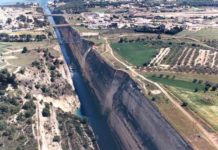
History of Ancient Canals: Egyptians, Romans & Chinese Used Artificial Waterways
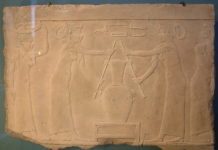
Aromatics in the Ancient World: History Of Aromatherapy
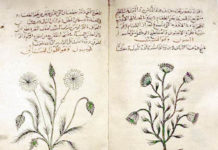
The History of Medicinal Herbs: The Link Between Botany and Herbal Medicine

- Pantone Colors

Chavacano: A Spanish-Based Creole Language of the Philippines
As mentioned above, one Chavacano dialect is extinct, and others may be diminishing. (Not surprisingly, the number of speakers and the current status of the different dialects is hotly disputed.) But Chabacano de Zamboanga is a healthy language, forming both the main mother tongue and the lingua franca of Zamboanga, the sixth largest city in the Philippines, with more than 800,000 residents. Efforts are being made to ensure the health of the Cavacano media. A recent article in the Philippine Inquirer , for example, highlights a Chavavano radio drama produced locally by a Canadian Catholic priest. As Christopher Sundita, writing a comment on a 2011 Language Hat post , claims:
[T]he Zamboanga variety is the healthiest variety of Chavacano. It has experienced exponential growth since the 1940s with Keith Whinnom (1957) reporting 1,300 speakers to the 2000 Census reporting around 380,000 (with the usual caveats). There is ample media in Zamboanga Chavacano and its local prestige ensures its survival. The future doesn’t look too great for the Cavite & Ternate varieties. And Ermita Chavacano is already gone, if its sole speaker hasn’t passed away yet.
The linguist John M. Lipski goes further than Sundita, dismissing the low estimate of Whinnon. He argues strongly against:
[T]he mistaken notion among creolists (beginning with Whinnom 1956) that the largest Chabacano-speaking population, that of Zamboanga City, is small and moribund, when in fact it is a thriving first- and second-language speech community of perhaps half a million speakers. Frake (1971) was the first to provide more accurate information on Zamboangueño, but to this day many scholars in the Philippines and abroad are unaware of the true strength of the Zamboanga Chabacano community.
The geographical distribution of Chavacano sheds light on the distinctive historical geography of the Philippines. Although Spain ruled the Philippines for more than 300 years, Spaniards never settled in large numbers and did not seek to impose their language on people of the archipelago. The two most important places of Chavacano development were of particular military significance to Spain, and thus housed many soldiers and other Spanish-speaking personnel. One of these was Cavite, located on Manila Bay, which housed the all-important shipyard (the Astillero de Rivera) in which most of the storied Manila galleons, which sailed annually to Acapulco Mexico, were constructed. After the galleon trade was discontinued in 1815, the shipyard was transformed into the Spanish Arsenal.
Zamboanga, quite in contrast to Cavite, was situated at the far extremity of the Spanish imperial possessions in the Philippines. But that gave it great significance in the never-ending war between the Spanish Empire and the Muslim sultanates of southwestern Mindanao and the Sulu archipelago. Fort Pilar in Zamboanga long served as the bulwark of Spanish power in the region, albeit an insecure one that demanded constant reinforcement. Mexican soldiers, masons and other workers from Cavite, and laborers from the Visayas Islands in the central Philippines rubbed shoulders in the fort and adjoining town. In due time, the creole language of Chabacano de Zamboanga emerged, allowing these disparate groups to easily communicate with each other.
* Controversies arise over the use of “Chabacano” versus “Chavacano.” As the author of one article notes , “In Zamboanga City, the old-timers will be offended if you tell them that their language is chabacano instead of chavacano. To the new generation the words chabacano and chavacano are interchangeable.” The Wikipedia explains the origin of the word in this manner:
Chavacano or Chabacano originated from the Spanish word chabacano which literally means “poor taste”, “vulgar”, “common”, “of low quality”, or “coarse”. During the Spanish colonial period, it was called by the Spanish-speaking population as the “ lenguaje de la calle “, “ lenguaje de parian ” (language of the street), or “ lenguaje de cocina ” (kitchen Spanish to refer to the Chabacano spoken by Chinese-Filipinos of Manila, particularly in Ermita) to distinguish it from the Spanish language spoken by the peninsulares , insulares , mestizos , or the elite class called the ilustrados . This common name has evolved into a word of its own in different spellings with no negative connotation, but to simply mean as the name of the language with that distinct Spanish flavour. However, most of its earlier speakers were born of mixed parentage – Hispanized urban natives, Chinese migrants and Spanish or Latin American soldiers and civil servants during the Spanish colonial period.

Differences and Similarities Among the Chavacano Languages in the Philippines
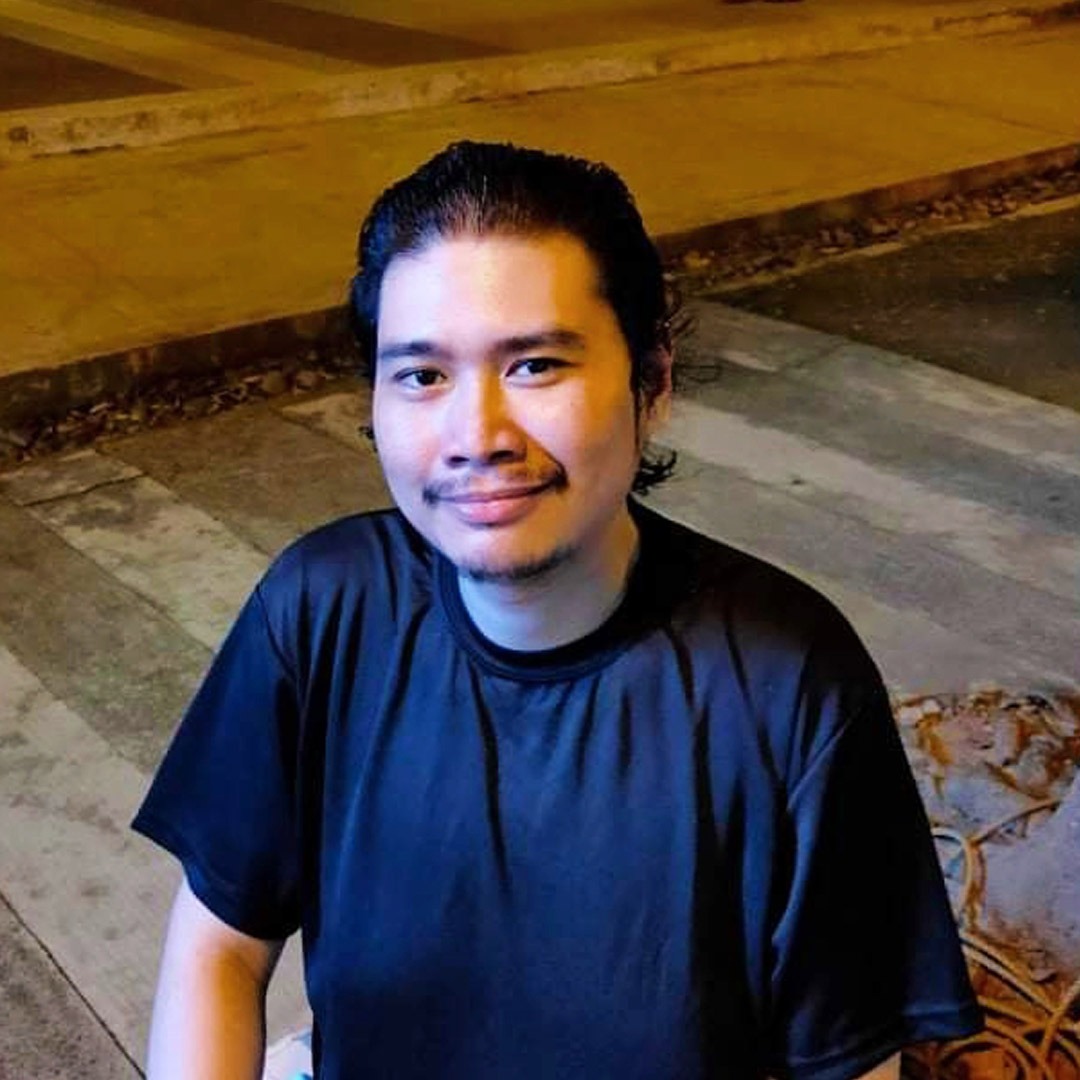
Shutterstock
This article is available in Spanish .
The Chavacano language is a Spanish creole spoken in the Philippines. It is the only Spanish-based creole language in Asia and one of the oldest creole languages in the world. With majority of its vocabulary stemming from the Spanish language, Chavacano is considered to be the only non-Austronesian language in the Philippines.
There are three major variants of the Chavacano language: Two are found on the shores of Manila Bay, specifically in Cavite city and the town of Ternate in Cavite, and one found in faraway Zamboanga city. Another variant used to exist also along Manila Bay, specifically in Ermita, but it is now thought to have gone extinct when Manila was heavily bombed during the World War II.
As a native speaker of the Chavacano language variant found in Zamboanga city, it is quite a treat for me to discover and analyze the differences and similarities among each variant. Making these comparisons will, hopefully, spur more interest in the Chavacano language as people get a glimpse of the richness and diversity of our culture.
Origins of the Chavacano Language
Much controversy lies on the origins of the Chavacano language, and several theories have been presented by linguists. One of them suggests that the Manila Bay varieties began as a Portuguese creole language in Indonesia, transplanted to Ermita in Manila by the mass migration of its speakers during the 17 th century, and from there, branched out into different places including Ternate and Cavite city.
In Zamboanga city, most of us like to subscribe to the more romantic theory of the Chavacano language being born from Spanish soldiers marrying locals. Others like to think that it was a result of necessity when workers from different parts of the Philippines, including Mexico, were imported to Zamboanga for the construction of the Fort Pilar in 1635.
Because of the lack of early documentation on the Chavacano language, its origins remain to be a mystery. In fact, this subject is thought to be the Holy Grail of linguistics.
Number of Speakers
According to the 2010 Census of Population and Housing published by the National Statistics Office, there were more than 807,000 people in Zamboanga city in 2010, and more than 43% speak Chavacano. This equates to more than 350,000 Chavacano speakers in Zamboanga city.
In the same publication, Chavacano speakers in the province of Cavite were estimated to number to more than 5,000 speakers. However, having been categorized into a single language group, it is impossible to tell how many speak the Ternate variant and how many speak the Cavite city variant. Having had the opportunity to visit Cavite city and Ternate in 2018 with a Spanish researcher, I can say that it was much easier to find Chavacano speakers in Ternate than in Cavite city. In fact, my initial impression was that the Cavite city variant could be found in only a few barangays (villages).
Influence of Philippine Languages
Though Spanish is the common lexifier among all three variants of Chavacano, the creole’s grammatical structure is generally the same as that of other Philippine languages.
Tagalog is known to be the complementary language to the Manila Bay Chavacano variants whereas it is Cebuano and/or Hiligaynon that is the substrate language of the Zamboanga Chavacano variant.
In modern times, Tagalog’s influence on the Zamboanga Chavacano variant has been rapidly increasing. This is a result of emigration and non-speakers of Chavacano filling the void left.
Pronouns and Tenses
One of the major hurdles for intelligibility among all three Chavacano language variants are its pronouns and tenses, which are mostly different from one another.
Except for “nisos” (the first-person plural in Caviteño), I find the rest of its pronouns quite understandable. Though the singular pronouns of the Ternate variant are readily understandable, all of its plural pronouns are not.
As for the tenses, it looks like both past and present tense won’t be a problem for speakers of all three variants as they are all the same. The challenge lies in the future tense, which in the Zamboanga variant is marked with an “ay” before the verb and many times not expressed at all. Meanwhile, both Manila Bay Chavacano variants use the word “di” before the verb to express future tense.
According to friends who speak the Manila Bay variants, they are mutually intelligible.
Of all three variants, I personally find the Chavacano Ternate variant the most difficult to understand in written or spoken form. But with some knowledge of Spanish as well as its pronouns and tenses, I imagine it will be quite easy for speakers of the Zamboangueño Chavacano variant to understand the Cavite city variant both in written and spoken form.
Voseo exists across all Chavacano language variants.
In a documentary produced by a local television network, an experiment was conducted to check intelligibility between the Manila Bay Chavacano variants. During the course of the experiment, one of the things that they found out was that using the word “vos,” which is similar to the Chavacano in Zamboanga city, is considered very impolite in Cavite. However, the same word is not considered impolite in Ternate.
In fact, my friend told me that when you use “tu” in Ternate, they automatically know that you are either from Zamboanga or Cavite city.
Language Name Preferences
The spelling of the name of their language is a hot debate topic in Zamboanga city, but it is clear that those who prefer to spell the name of their language with a “v” (i.e., Chavacano) is more vocal and appear to outnumber those who prefer to spell it with a “b” (i.e., Chabacano). Meanwhile, Cavite Chavacano variant speakers almost always would spell the name of their language with a “b” (i.e., Chabacano).
In Ternate, Chavacano speakers usually call their language Bahra. This is in reference to the river called Bahra de Maragondon.
Differences in the Verb Endings
One of the more glaring differences between the Zamboanga Chavacano variant and the Manila Bay Chavacano variant is that they pronounce the “e” as an “i” in certain words ending with an “i.” A few examples of this are “pudi” (“pode” or “puede”), “sabi” (“sabe”) and “ustedis” (“ustedes”). Meanwhile, they tend to pronounce the “o” as “u” in certain words such as “nwebu” (“nuevo”), “anyu” (“año”), “impermu” (“enfermo”), etc.
When I showed my friends in Zamboanga a sample of the Chavacano in Ternate and Cavite city, this was one of the first things that they immediately noticed.
Attitudes of Its Speakers
One of the things I found out upon visiting Ternate was the disdain felt for the Chavacano language among some of its speakers. This is the same feeling that is present in many Chavacano speakers in Zamboanga city. In fact, sporting a heavy Chavacano accent is a source of ridicule among speakers of both Chavacano variants.
In Zamboanga city, a heavy Chavacano accent is associated with folks who live in rural areas of the city.
Question Words
Most question words are the same across all three variants, with minor differences in pronunciation such as the word “cuando” in the Zamboanga Chavacano variant being pronounced as “cuandu” in the Manila Bay Chavacano variants.
What makes the Zamboangueño variant unique is that it has three words to say “how,” namely: “que laya” (variations include “quilaya” and “paquilaya”), “que modo” (variations include “paquimodo” and “quimodo”) and “que hechura” (variations include “quichura” and “paquichura”).
Similar to Latin American Spanish and Peninsular Spanish, there are some nuances on the names of our meals in Chavacano.
Old-timers in Zamboanga, most probably having been educated in Spanish, will insist that “breakfast” is “desayuno” in Chavacano while “almuerzo” is “lunch.” In modern Chavacano though, we use the word “almuerzo” for “breakfast” while “lunch” is normally not expressed with a single word but by saying it using other words.
When asking if somebody has already eaten lunch, you can ask this question indirectly.
For example:
“Ya come ya tu?”
“Have you eaten yet?”
Others will say that we use the word “comida” for lunch.
In Cavite, my friend said that “breakfast” is either “desayuno” or “almuerzo.”
Meanwhile, the word for breakfast in Ternate is “almuesu,” and it seems like they don’t have a word for “lunch” either.
Across all variants, the word for “supper” is “cena.”
Swear Words
Though we share many common swear words, there are some that aren’t completely the same. For example, while Ternateños say “konyubusmadre” (“c o ño de vos madre”), Zamboangueños say “kunyubunana” (“c u ño de vos nana”).
Notable Differences in Words Used
Since it is easy to get samples of each Chavacano language variant from the myriad of serious and casual conversations that take place on social media today, we can observe them easily even from a distance.
When asking if somebody speaks a certain language, Spanish speakers use the word “habla” for “speak.” For example:
“¿Hablas español?”
“Do you speak Spanish?”
Most Spanish speakers, however, assume that you can also use the word “habla” in Chavacano, but the Manila Bay Chavacano variants actually require the use of the word “platica.”
“Buenu ba tu platica Chabacanu?”
“Do you speak Chavacano well?”
In Zamboanga, we use the word “conversa,” which is pronounced as “cumbersa.”
“Sabe ba tu conversa Chavacano?”
“Do you know how to speak Chavacano?”
Another word that caught my attention is “choku.” Whereas “squid” is “choca” in Zamboanga and Cavite city, it is known as “choku” in Ternate. In Cavite city, they have a dish called “Pansit Choca,” which is a seafood noodle dish.
Online Visibility
Owing to its dwindling number of speakers, the Cavite Chavacano language variant does not figure prominently on social media. However, both the Zamboanga and Ternate Chavacano variants are thriving on the online landscape. On Facebook, for example, there are dozens of groups for Chavacano speakers as well as pages that regularly post memes in Chavacano.
On YouTube, there are also a number of songs and vlogs, though mostly are in the Zamboanga Chavacano language variant.
Chavacano masses have always been part of the repertoire of most churches in Zamboanga city. These are also broadcast on television and radio, and in recent times, they are livestreamed. In Ternate, efforts are underway to bring back Chavacano masses as well as to stream them live on Facebook.
Commerce, Schools and Workplaces
In recent years, the Chavacano language in Zamboanga city is slowly being replaced by Tagalog as the language of commerce. As for the Manila Bay variants, I don’t believe they ever enjoyed mass adoption as their cousin in Zamboanga city does.
In Zamboanga city, the Chavacano language is taught in schools, and teachers use it as a medium of instruction.
The Chavacano language is truly a rich one, and with the passing of time, it may transform into a more developed and standardized language. Let us hope that the younger Chavacano speakers will learn to appreciate the beauty of their language and will not abandon its usage in favor of major languages.

Reflecting ‘Decolonization’ in Kidlat Tahimik’s Crystal Palace Exhibit
Philippines, mexico sign air services agreement.
Comments are closed.
You may also like

The Oddity of the Spanish-language Dialogues in ‘Maria Clara at Ibarra’

Mexican Embassy Hosts ‘Altar de Muertos’ Exhibit for Susan Roces, Vicente Fernández
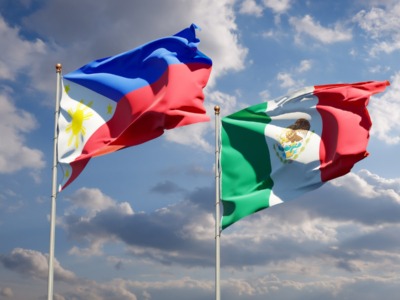
Two Sides of the Same Coin: Similarities Between the Philippines and Mexico
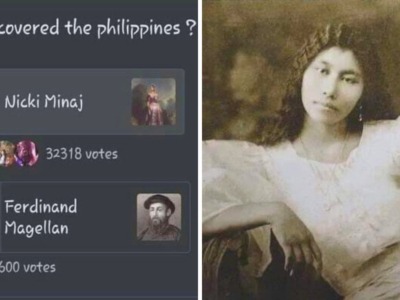
No, Ferdinand Magellan Did Not ‘Discover’ the Philippines
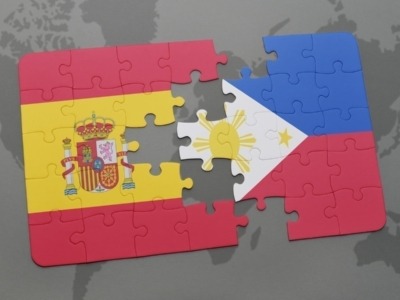
Auxiliares de conversación: My Language and Culture Exchange Experience in Spain

IN PHOTOS: El Deposito Underground Tunnel in San Juan City
- Philippines
- Latin America
- Movie and TV
- Entertainment
Latest Articles
What is a ‘hispanista’, turnitin is hiring, luis eduardo aute tribute concert announced for november, spanish-language films to screen for free at ‘película’ 2023, watch argentine films for free at the argentine film festival 2023, privacy overview.
Travel and Wellness With Maria
Sharing all things about pet-friendly travels and full-time work from home setup
Preserving the Chabacano Language of Zamboanga

You May Also Like
No comments.

Filipino | Philippine History and Culture
The enduring legacy of chavacano: a linguistic gem in the philippines.

The Philippines, an archipelago in Southeast Asia, boasts a rich linguistic tapestry, woven with diverse languages and dialects that reflect the country's complex history and cultural influences. Among these linguistic gems is Chavacano, a unique Creole language that has taken deep root in several regions of the Philippines, particularly in the Zamboanga Peninsula and Cavite City.
Chavacano's origins trace back to the 16th century when Spanish settlers interacted with the indigenous people of the Philippines. Over time, a distinct language emerged, blending Spanish and various Philippine languages into a unique linguistic blend. Chavacano is characterized by its simplified Spanish grammar, extensive use of Spanish loanwords, and integration of elements from local languages.
While Chavacano shares a common linguistic root, it has evolved into distinct regional varieties, each with its own unique flavor and characteristics. For instance, Zamboangueño Chavacano is characterized by its stronger Spanish influence, while Caviteño Chavacano has absorbed more Tagalog elements. This linguistic diversity reflects the rich cultural tapestry of the Philippines and the dynamic nature of language.
Despite its rich heritage, Chavacano faces challenges in the modern era. The dominance of English and Tagalog in education and media has led to a decline in the use of Chavacano among younger generations. Additionally, the lack of standardized Chavacano orthography has made it difficult to use the language in formal settings.
To address these challenges, various initiatives have been undertaken to promote Chavacano language learning and preservation. These efforts include the establishment of Chavacano language schools, the development of Chavacano teaching materials, and the creation of Chavacano media platforms. These initiatives aim to ensure that Chavacano remains a vibrant and dynamic language, passed down through generations to preserve its unique linguistic heritage.
- Culture and History
Related Posts
The Middle Ages: Not Just Gloomy for Humans, Cats Faced a Dark Chapter Too
The Philippines Almost Became the "McKinley Islands"?
A Brief History of Jollibee

- Constructed scripts
- Multilingual Pages
Chavacano or Philippine Creole Spanish is a Spanish-based creole spoken in parts of the Philippines, especially in and around the city of Zamboanga, by over 600,000 people. There are also speakers of the Zamboanga dialect of Chavacano in Sempornah, Malaysia. It is the only Spanish-based creole in Asia and the only non-Austronesian language to have developed in the Philippines.
Chavacano combines vocabulary mainly from Spanish, with grammar mainly from Tagalog and Cebuano. There are two main varities of Chavacano in Zamboanga - a formal variety that contains more Spanish vocabulary, and an informal variety containing more vocabulary from Tagalog, Cebuano and other Philippine languages.
Chavacano is used primarily as a spoken language which dates back to 1635, when Zamboanga became a permanent Spanish stronghold with the construction of the San José Fortress. Recently a standard written form has began to emerge.
As a general orthographic rule, all words of Spanish/European and Mexican origin are spelt according to their original spelling in the Spanish alphabet. Words from Philippine languages are spelt in the native way along Spanish rules. For example: jendeh , meaning no or not, is not spelled as hinde because h is always silent in the Spanish alphabet, thus it is not spelled as in Tagalog.
There are six dialects of Chavacano, each with a number of different names:
- Zamboanga dialect (about 360,000 speakers): Zamboangueño, Chavacano/Chabacano/Chabakano de Zamboanga
- Cavite dialect (about 200,000 speakers): Caviteño, Chavacano/Chabacano/Chabakano de Cavite, Caviten, Linguaje di Niso, Tsabakano
- Ermita dialect: Ermiteño or Ermitaño (practically extinct)
- Ternate dialect (about 7,000 speakers): Ternateño Chabacano, Bahra, Linguaje di Bahra.
- Davao dialect (about 18,000 speakers): Davaoeño, Davaweño, Davawenyo, Davawenyo Zamboangenyo, Abakay Spanish, Davao Chabacano/Chavacano/Chabakano.
- Cotabato dialect (about 20,500 speakers): Cotabateño, Cotabato Chabacano/Chavacano/Chabakano.
Chavacano alphabet and pronunciation (Zamboanga dialect)
- C = [s] when followed by e or i, and [k] when followed by a, o or u
- G = [x] when followed by e or i, and [g] when followed by a, o or u
- If you know what the apostrophe in the sample text below represents, please contact Omniglot .
Download an alphabet chart for Chavacano (Excel)
Sample text in Chabacano de Zamboanga
Todo'l maga ser humano nace libre e igual en dignidad y maga derecho. Dotado con ellos el razon y conciencia y debe ellos comporta fraternalmente con el maga uno con el maga otro.
Listen to this text
Sample text in Chabacano de Cavite
Todo el mga genti ya naci libre y igual na dignidad y derecho. Tieni ilos rason y conciencia y debi ilos trata cun uno y otro comu mga hermano.
Translation
All human beings are born free and equal in dignity and rights. They are endowed with reason and conscience and should act towards one another in a spirit of brotherhood. (Article 1 of the Universal Declaration of Human Rights)
Lord's Prayer in Common Chavacano of Zamboanga
Tata de amon talli na cielo, bendito el de Usted nombre. Manda vene con el de Usted reino; Hace el de Usted voluntad aqui na tierra, igual como alli na cielo.
Dale kanamon el pan para cada dia. Perdona el de amon maga culpa, como ta perdona kame con aquellos quien tiene culpa kanamon. No deja que hay cae kame na tentacion y libra kanamon na mal.
Lord's Prayer in Formal Chavacano of Zamboanga
Nuestro Tata talli na cielo, bendito el de Usted nombre. Manda vene con el de Usted reino; Hace el de Usted voluntad aqui na tierra, igual como alli na cielo.
Dale con nosotros el pan para cada dia. Perdona el de nuestro maga culpa, como nosotros ta perdona con aquellos quien tiene culpa con nosotros. No deja que nosotros hay cae na tentacion y libra con nosotros de mal.
Philippine National Anthem (Chavacano de Zamboanga version)
PATRIA DE AMORES Tierra adorada, Hija del sol de oriente, Fervor del corazon, viví na tuyo pecho.
Patria de Amores, Cuna del heroísmo, Nunca hay rendí tú al mana invasor.
Na tuyo mar y mana monte, y aire, y azul cielo, Tiene esplende el poema y canción del amado libertad.
Victoria árde el chispa de tuyo bandera. Nunca mirá apagáo Su mana estrella y su sol
Tierra de gloria, del sol y amores, vida dulce na tuyo abrazáda, Un honor se para con nosotros, Cuando tiene opresor, morí por tú.
Sample videos in and about Chavacano
Information about Chabacano | Phrases in Chabacano de Zamboanga & Chabacano de Cavite
Information about Chavacano http://en.wikipedia.org/wiki/Chavacano https://de.wikipedia.org/wiki/Chabacano https://pt.wikipedia.org/wiki/Língua_chavacanas http://chabacano.iespana.es/english.htm http://www.zamboanga.com/chavacano/chavacano_de_zamboanga_speak.htm http://filipinokastila.tripod.com/chabig.html
Chavacano dictionary http://www.zamboanga.com/chavacano/
Blogs about Chabacano http://hablachabacano.blogspot.com https://bienchabacano.blogspot.co.uk
Creole languages
Betawi , Bislama , Cape Verdean Creole , Chavacano , Chinook Jargon , Dominican Creole French , Fanagalo , French Guianese Creole , Guadeloupean Creole , Guinea-Bissau Creole , Haitian Creole , Jamaican , Kituba , Manado Malay , Mauritian Creole , Nagamese , Ndyuka , Norfuk , Nubi , Palenquero , Papiamento , Pijin , Réunion Creole , Sango , Saramaccan , Seychelles Creole , Sierra Leonean Creole , Singlish , Sranan , Saint Lucian Creole , Tok Pisin , Torres-Strait Creole
Languages written with the Latin alphabet
Page last modified: 04.06.21
728x90 (Best VPN)
Why not share this page:
If you like this site and find it useful, you can support it by making a donation via PayPal or Patreon , or by contributing in other ways . Omniglot is how I make my living.
Get a 30-day Free Trial of Amazon Prime (UK)
If you're looking for home or car insurance in the UK, why not try Policy Expert ?

- Learn languages quickly
- One-to-one Chinese lessons
- Learn languages with Varsity Tutors
- Green Web Hosting
- Daily bite-size stories in Mandarin
- EnglishScore Tutors
- English Like a Native
- Learn French Online
- Learn languages with MosaLingua
- Learn languages with Ling
- Find Visa information for all countries
- Writing systems
- Con-scripts
- Useful phrases
- Language learning
- Multilingual pages
- Advertising


Chavacano - the Evolution From Pidgin to Creole
- Category: Science , Sociology
- Topic: Creole , Spanish Language
Pages: 1 (404 words)
- Downloads: -->
--> ⚠️ Remember: This essay was written and uploaded by an--> click here.
Found a great essay sample but want a unique one?
are ready to help you with your essay
You won’t be charged yet!
Evolution Essays
Moon Essays
Genetic Engineering Essays
Mars Essays
Stars Essays
Related Essays
We are glad that you like it, but you cannot copy from our website. Just insert your email and this sample will be sent to you.
By clicking “Send”, you agree to our Terms of service and Privacy statement . We will occasionally send you account related emails.
Your essay sample has been sent.
In fact, there is a way to get an original essay! Turn to our writers and order a plagiarism-free paper.
samplius.com uses cookies to offer you the best service possible.By continuing we’ll assume you board with our cookie policy .--> -->